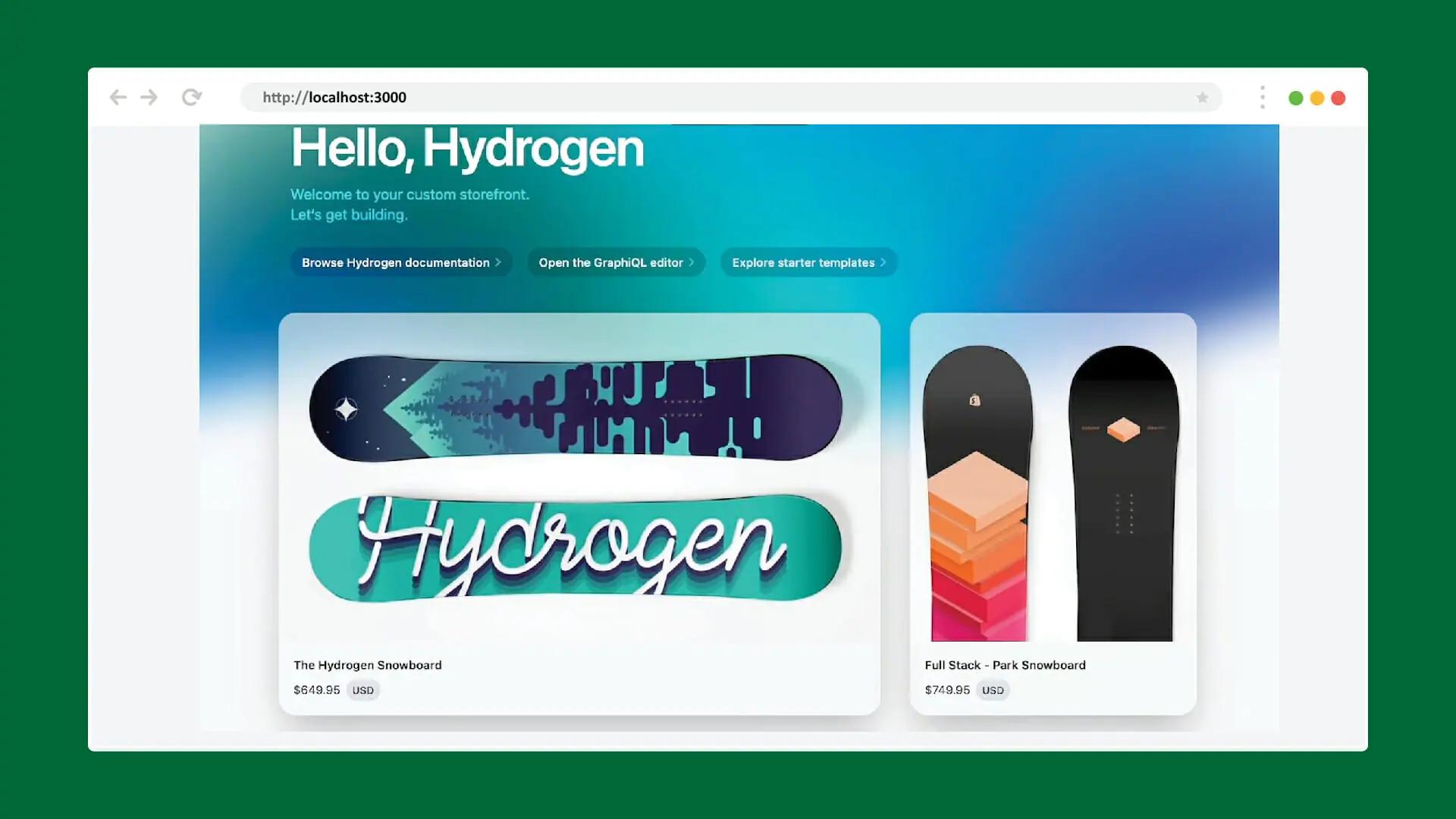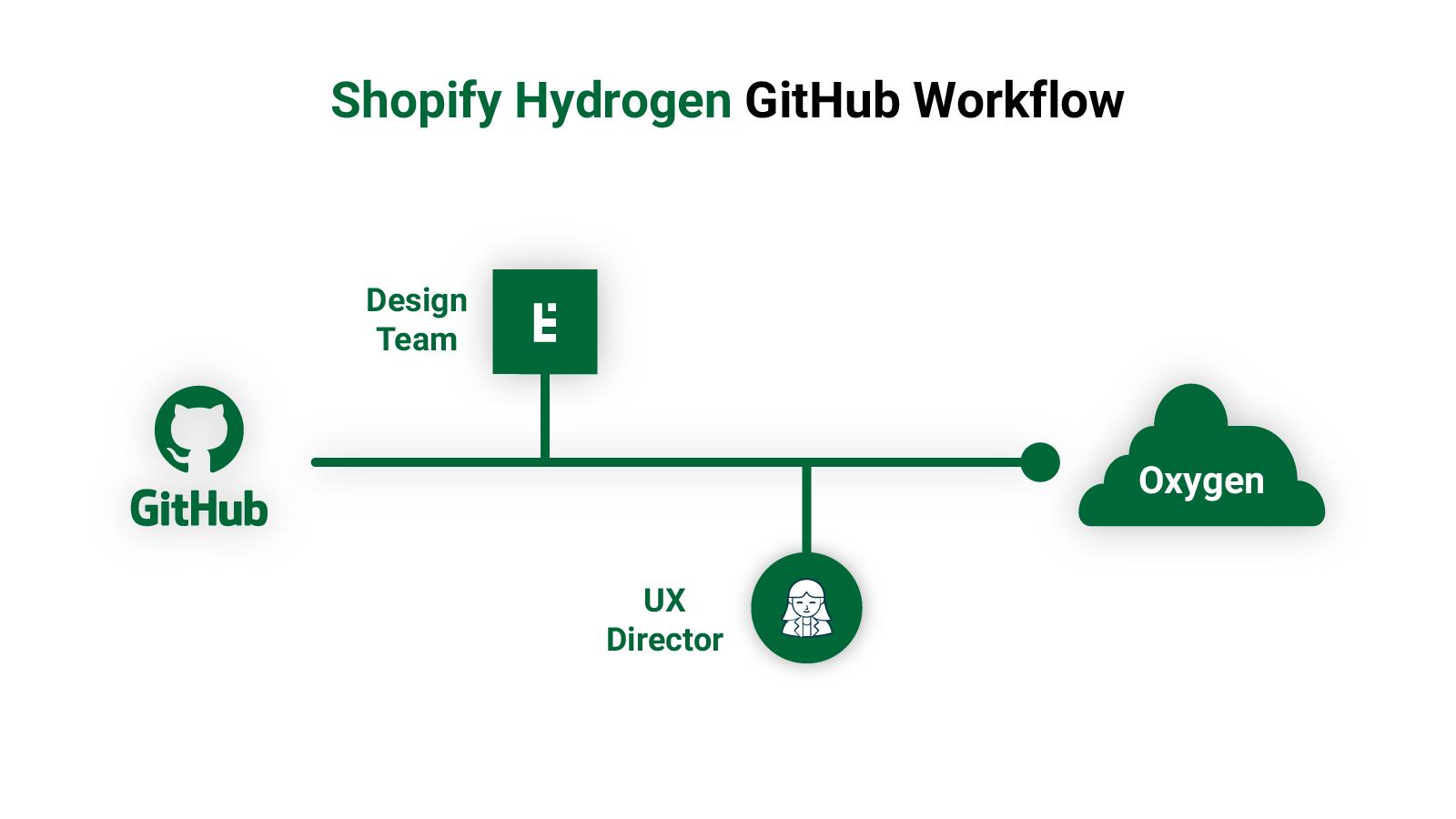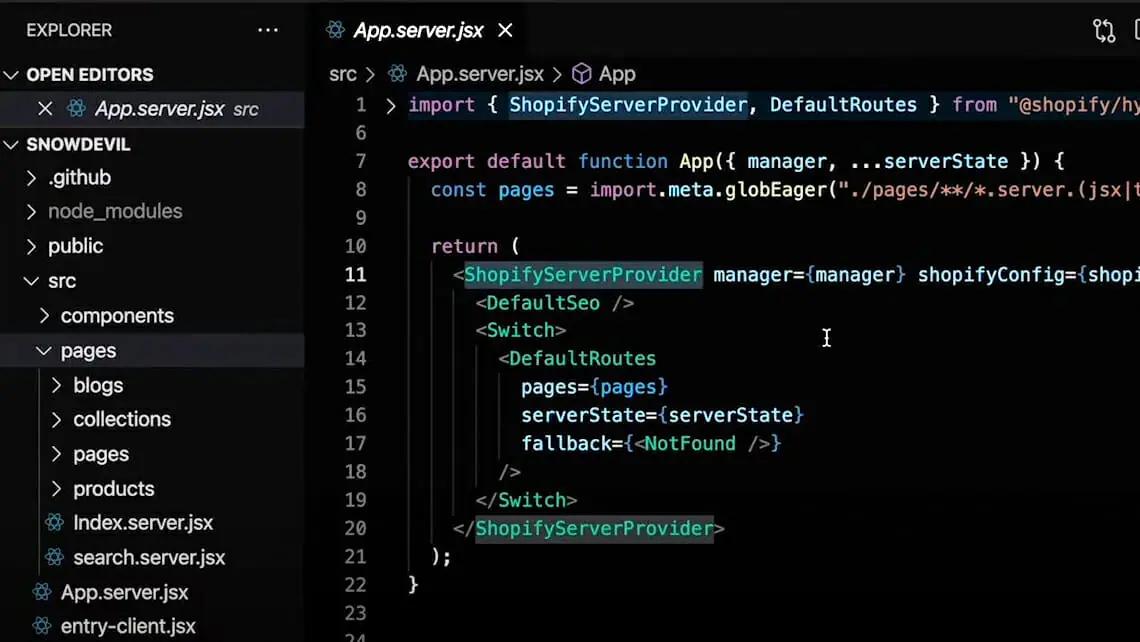Shopify Hydrogen: The Future of Shopify Frontend Design

Shopify announced some exciting changes during Unite 2021. But the one that caught our attention was Shopify Hydrogen – a new approach to designing online storefronts. It allows Shopify developers to build “headless” stores where the customer-facing frontend exists independently of the data-processing backend.
Hydrogen helps Shopify merchants provide their customers with dynamic shopping experiences using React, a JavaScript library (collection of prewritten code) used to design interactive user interfaces. And that’s not all. They can do this while using Shopify to power the backend commerce functionality of their stores.
In this article, we explore Hydrogen—the latest Shopify frontend design technology. We’ll help you understand what it is, how it works, and how it can benefit your online business.
An Introduction to Shopify Hydrogen and Oxygen

Shopify Hydrogen is a React-based framework that gives you a set of ready-to-use components to design a custom storefront. Thus, you aren’t limited to templates for your store design; you can architect the entire online shopping experience from scratch. Hydrogen uses webhooks to integrate your storefront with Shopify and allows you to utilize Shopify’s intuitive ecommerce functionality while maintaining complete control over the frontend user experience.

To help merchants host and deploy Hydrogen-based apps, Shopify is launching Oxygen, a global cloud server infrastructure. It will help you host custom storefronts, collaborate with design teams using GitHub, and even deploy Shopify Hydrogen apps to a live store using your own workflow. And no matter where your customers are, Shopify’s new cloud infrastructure will ensure your store always loads instantly by hosting your Hydrogen app code alongside its Storefront API.
And suppose you want to host it yourself. In that case, Shopify will package your Hydrogen application into a Dockerfile so you can host it yourself. You’ll have everything you need to design and manage the online shopping experience of your store.
How Shopify Hydrogen Works

If you’ve used React in the past, you’ll feel right at home with Hydrogen. It retains most of the default React folder structure with a public directory for static assets and src (source) directory for the application code. In addition, it incorporates Shopify liquid templates for pages, blogs, collections, and products inside the source directory.
Shopify includes a React Provider called ShopifyServerProvider that’s preconfigured to use tokens and connect with their Storefront API. So you don’t need to worry about manually configuring Hydrogen to work with Shopify.
Although Shopify does an excellent job at making it easy to build and run an ecommerce website, designing one from scratch is extremely challenging. This is because online stores process dynamic content such as product information, customer information, currencies, and languages.
And until recently, this dynamic content made it difficult to use React for ecommerce implementations. To preserve the dynamism required for ecommerce, React developers use client-side rendering to load pages. But this approach often hurts site performance, especially on slow mobile devices.
On the other hand, pre-rendering pages on the server and delivering static pages to client devices sacrifices the dynamism needed to run an online store. So, if you want to use React to build an ecommerce website, you need a ton of optimization to ensure client-side rendering doesn’t hurt store performance.
But the good news is that with Shopify Hydrogen you don’t need to worry about extensive optimizations or performance issues. Shopify is leveraging a new way of writing React components called React Server Components (RSC) that marks essential components in Hydrogen’s source folder as .server and .client.
So, when the store is deployed to production, .server components run in the cloud and only the .client components are executed in the client browser. Thus, RSC helps your store deliver dynamic content without compromising performance in two ways:
It reduces the amount of data transferred between the server and client device, because the code intended for the server remains on the server. So client devices don’t need to handle unnecessary data; they’re free to focus on rendering pages.
It reduces the size of the JavaScript bundle transferred from the server to the client device. A smaller bundle size means client devices can download pages faster.
RSC is a new technology. But Shopify’s going all-in on it because they can see the potential it holds for future ecommerce implementations. It broadens the horizon for Shopify frontend development and helps you design unique omnichannel shopping experiences.
Benefits of Using Hydrogen for Shopify Frontend Design
A massive 64% of ecommerce enterprises surveyed by Wunderman Thompson Commerce believe that a bespoke solution is the key to unlocking business growth. Here’s how the new Shopify React framework can help you design a unique shopping experience and grow your online business.
More Design Freedom
Hydrogen separates the customer-facing side, or the “head” of your website, from the part holding all the data and functionality. This “headless” approach gives you more design freedom and allows you to experiment with layout and content changes.
You can design a new frontend, share it with your team on Oxygen, and deploy it live as a Shopify Hydrogen app using a streamlined workflow. And because the front and back ends of your website communicate using Hooks and APIs, everything snaps into place easily—you don’t need to worry about breaking your store after a redesign.
Better Performance
Hydrogen uses independent client and server components and very little JavaScript. Thus, it reduces the bandwidth needed to load a page considerably.
As a result, you’re likely to see your page load speed drop from a few seconds down to milliseconds once you switch to Hydrogen. Naturally, this means a significant bump in your website’s Core Web Vitals, and potentially, an increase in organic search rankings as well.
Easier Personalization
Using a React-based storefront helps you display dynamic content and personalize the online shopping experience for your customers. For example, you can configure blocks to offer product recommendations based on customer interactions, past orders, or location. Similarly, you can offer targeted discounts by region or customer type (B2B, B2C) to give your customers a VIP shopping experience.
This is important because a 2019 study by Google found that customers were 40% more likely to exceed their shopping budgets when offered a personalized shopping experience. As a result, Shopify Hydrogen can help you boost sales, increase average order values, and improve customer retention.
Shopify Hydrogen: Unleashing Shopify Frontend Design Possibilities
Hydrogen represents a new world of possibilities for online retailers. It offers limitless design capabilities, faster loading stores, and the ability to personalize shopping experiences. And although it won’t be replacing Liquid anytime soon, Hydrogen is a major step towards future-proofing Shopify’s online infrastructure.
It’s safe to say that you can achieve most of what Hydrogen offers using current Shopify technologies. All you need is the right team to build it. Endertech has helped Shopify merchants design unique shopping experiences and automate business operations through integrations. You can browse our portfolio or jump on a call with our Shopify experts to learn how we can help you design your online store with Shopify and React.
